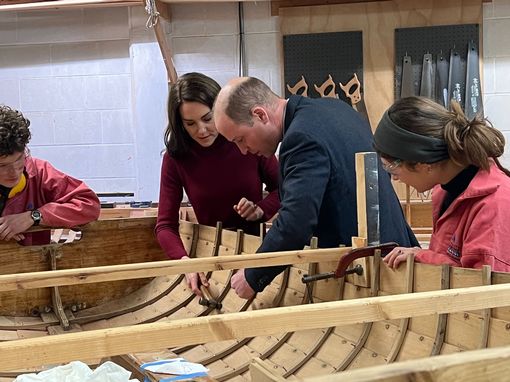Prince William was told second homes were the biggest cause of Cornwall's housing crisis, his wife Kate piloted model boats with primary school children and did the hokey cokey at a community centre that supports local people – and the couple tried their hands at boat building.
It all happened during today's first visit to the county by the new Duke and Duchess of Cornwall as a couple.

In Falmouth, they were shown around the National Maritime Museum where the Duchess of Cornwall was stunned to bump into her old history teacher, Jim Embury, after she recognised him in the crowd. She hugged Mr Embury, who is a volunteer at the maritime museum, and the two chatted.
They helped boat-building students, and raced model boats with pupils from a Falmouth primary school. They then moved on to the Dracaena community centre, where they joined in a game of table tennis.
Kate and William heard from a group of young people who are taking part in the ‘Young and Talented Cornwall’ scheme which provides financial support to help young people from across Cornwall fulfil their potential, regardless of their financial means or background.

And Prince William discussed the county's housing crisis with staff, volunteers and two clients of the Cornish housing charity St Petrocs. Two people helped by the charity told William "second homes" when he asked about the main reasons for homelessness in Cornwall.
The Duke and Duchess met current and past residents, staff members, and the chair of trustees to discuss the work and impact of St Petrocs across the county.
Both William and Kate "were visibly engaged through the 15-minute conversation and were especially interested to hear the personal experiences of residents", said the charity.
Chief executive Henry Meacock said: “It is a privilege for St Petrocs to have been included in the visit.
"The Duke and Duchess have stated that their priorities for their charitable work include homelessness, mental health and the environment, all of which are issues central to our charity.
"I believe the meeting will help us increase awareness of the issue of homelessness and will lead to action to address some of the current challenges our clients and residents face.”




